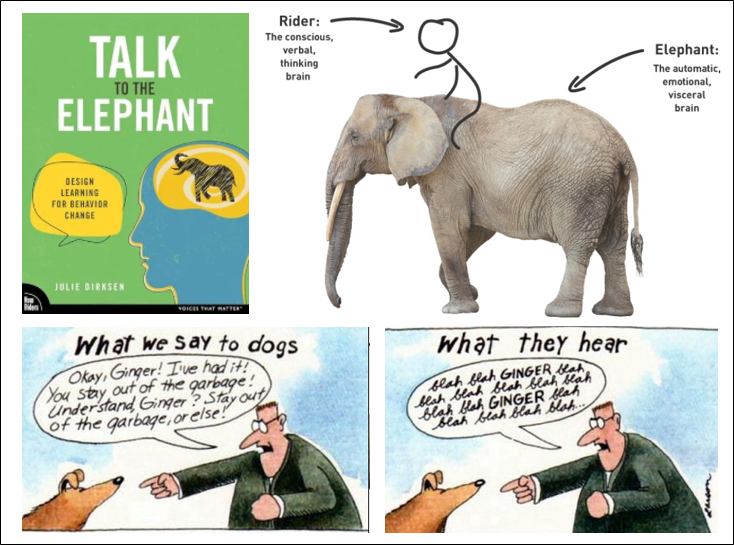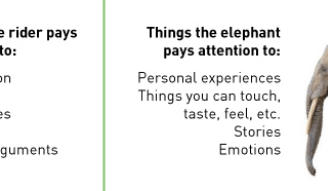CREATIVE LEARNING EXPERIENCES THAT CHANGE BEHAVIOR
Romance an Elephant. Change a Learner's Life.
Isn't it time to bone up on Elephant-lovelingo?
Lesley S
5/25/20252 min read


A bat and ball cost $1.10. The bat costs $1 more than the ball. How much is the ball?
If you said 10 cents, you’d be wrong. (It costs 5 cents & the bat is $1.05.) But you can also blame your brain which is opportunistically lazy. Sure, it will put forth effort if need be for complex mental activity. But why bother if there’s a quick, easy and intuitive answer.
Too bad it’s incorrect.
The quick, easy and intuitive – albeit incorrect – dictates most of our behavior. Including learning outcomes and behavior change. And behavior change is what we’re after with our adult learners – whether they’re there willingly (spendy seminars) or less so (compliance training).
So what do we do? Learning experience expert Julie Dirksen suggests learning Elephant Lovelingo.
In her book Talk to the Elephant: Design Learning for Behavior Change (New Riders | Pearson Education; 2024), she likens our decision-making making machinery to an elephant and a rider. Our rider is rational. Plans for the future. Sticks to the diet. Goes to the gym as planned. Adults.
And the inner elephant? Despite its bulk, it’s actually kind of a free-spirited hippie.
It lives in the now. You don’t weigh in for another 3 days. One cookie never killed anyone.
It prioritizes how it feels over unfeeling facts. Bungee jumping….I don’t care if it’s safer than crossing the street, it feels dangerous, so no way. NFW.
It likes to YOLO. Let habit handle the boring stuff! I completely got home on autopilot and forgot to pick up X very important thingy. Oops.
But elephants are our learners’ mode of transport through the journey of life.
To get the elephant’s agenda aligned with the rider’s, we have to speak its language. But what we generally do instead is like Gary Larson’s Ginger cartoon, just with Death by Powerpoint. “If you’ve ever made a presentation slide that is mostly bullet points, you are really talking only to the rider and ignoring the elephant,” says Dirksen.
And the elephant ain't havin' it. You want me to change course? Gimme a good reason.
Translate Riderspeak into Elephant-lovelingo:
Riderspeak: Team, don’t use illegal substances! They are banned. You could end up disqualified or even banned for doping violations.
Elephant-lovelingo: When you get busted for doping, what will your team mates think about you? How about when you look in the mirror?
Riderspeak: Attention, agricultural workers! When you are working at heights, it’s very important to follow the following safety guidelines. Cue bullet-pointy Powerpoint.
Elephant-lovelingo: If you are working at heights and ignore these safety guidelines, it’s a great way to have to pay a fat fine, or have to look for a new job. Or end up in a wheelchair. That is, if you manage to not die – which is probably more likely. In which case, good job on letting your kids have to grow up without you.
Riderspeak: Handwashing for the hospital’s nonclinical staff is very important! Not following procedure could result in your being reprimanded by your manager.
Elephant-lovelingo: If you follow the handwashing guidelines, you probably won’t get sick – or be the reason someone else does.
The tl;dr of Julie’s awesome book: "Figure out what people in your audience value and help them connect the dots between those values and the behaviors about which they are learning.”

